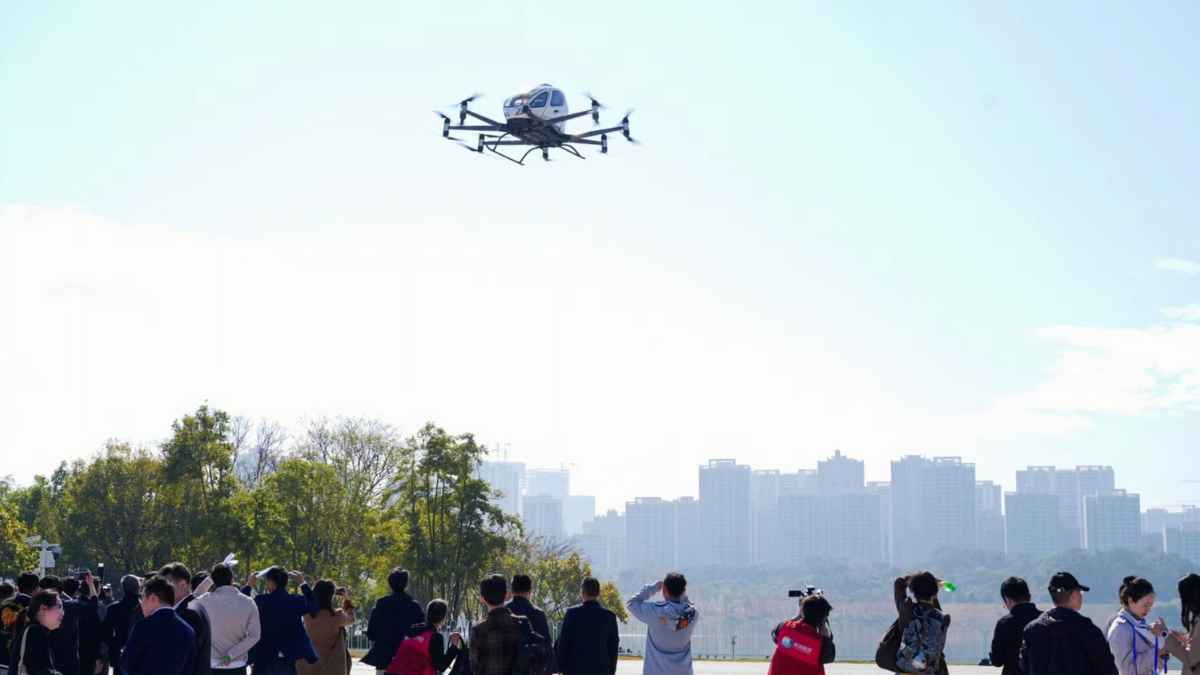Air taxis are now operational, reaching speeds of up to 130 kilometers per hour. For years, we’ve imagined flying cars as part of futuristic sci-fi movies. Now, that vision is becoming a reality in China. Partnering with EHang, a Chinese company, the country has completed its first air taxi takeoffs, making waves worldwide and showing the world what autonomous flying taxis will look like.
While the specific cities and dates haven’t been finalized, EHang made an important announcement on April 6, 2025: the Civil Aviation Administration of China has granted flight authorization for the EH216 eVTOLs. These futuristic vehicles, equipped with unmanned cockpits, offer a smooth, silent flight with panoramic city views.
This development places China at the forefront of air transportation technology, paving the way for a new era in how people move through large cities.
What makes these electric air taxis stand out?
These air taxis are more than just a novelty. With a top speed of 130 kilometers per hour and a range of 35 kilometers, they can zip across bustling megacities in a matter of minutes. Not only do these flying vehicles offer convenience, but they also feature a quick two-hour battery recharge time, ensuring constant availability.
The aircraft’s design includes 16 propellers, and they feature compact storage for essential items (up to 45 centimeters). The environmental benefits are significant, as the vehicles are powered entirely by electricity, cutting down on emissions. The smart battery management system also ensures real-time communication between the charging devices and the aircraft. Below, key features of EHang’s flying taxis:
| Feature | Specification |
|---|---|
| Maximum speed | 130 km/h |
| Range | 35 km (approx. 21 minutes of flight) |
| Battery recharge time | 2 hours |
| Passenger capacity | 2 passengers |
| Propellers | 16 propellers |
| Environmental benefits | Electric-powered, reducing emissions |
How much do these flying taxis cost? Will these flying taxis be available to everyone?
Currently priced at 2.39 million yuan, the flying taxis are designed to carry just two passengers. However, it’s expected that future models will see improvements, potentially lowering costs and increasing capacity. This could make them accessible for wider public use in the near future.
While they are currently a high-end, luxury service, it is expected that as production scales up and technology advances, air taxis will become more affordable. This could make urban air mobility a regular transportation option in cities around the world.
As China leads the way in air taxi technology, the world watches closely. With these flying vehicles set to transform city transportation, the question is: when will we see flying taxis in cities near us? For now, these autonomous air taxis mark the beginning of a revolution in how we travel. Will you be ready to hop on one?

